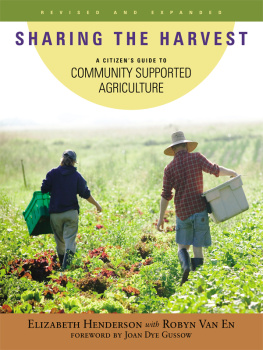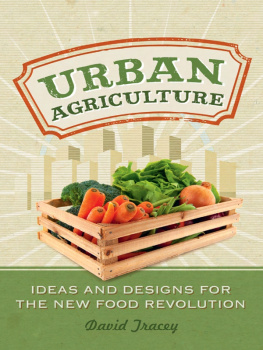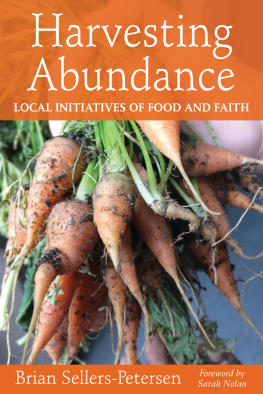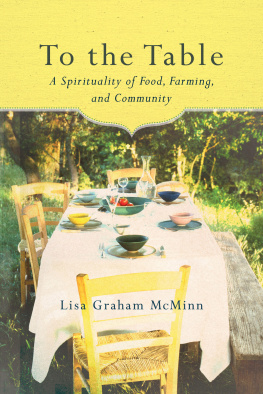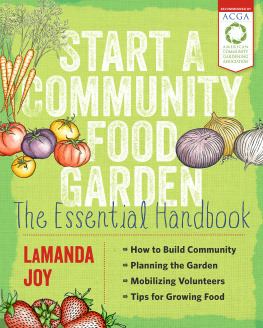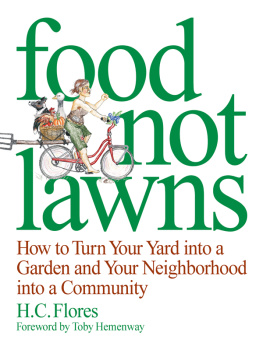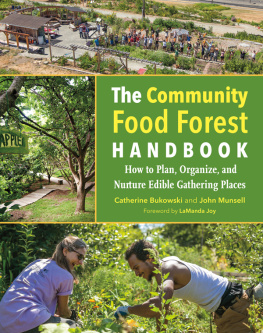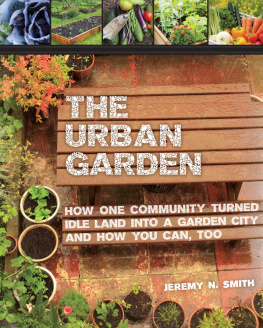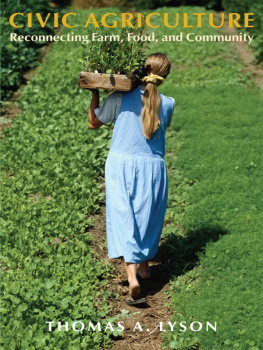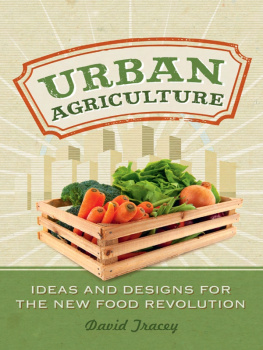
To Susan OConnor and Crissie McMullan
Copyright 2010, 2014 by Jeremy N. Smith
Foreword copyright 2010, 2014 by Bill McKibben
Photographs copyright 2010, 2014 by Chad Harder and Sepp Jannotta
Originally published as Growing a Garden City
All rights reserved. No part of this book may be reproduced in any manner without the express written consent of the publisher, except in the case of brief excerpts in critical reviews or articles. All inquiries should be addressed to Skyhorse Publishing, 307 West 36th Street, 11th Floor, New York, NY 10018.
Skyhorse Publishing books may be purchased in bulk at special discounts for sales promotion, corporate gifts, fund-raising, or educational purposes. Special editions can also be created to specifications. For details, contact the Special Sales Department, Skyhorse Publishing, 307 West 36th Street, 11th Floor, New York, NY 10018 or .
Skyhorse and Skyhorse Publishing are registered trademarks of Skyhorse Publishing, Inc., a Delaware corporation.
Visit our website at www.skyhorsepublishing.com.
10 9 8 7 6 5 4 3 2 1
The Library of Congress cataloged the hardcover edition as follows:
Smith, Jeremy N. Growing a garden city: how farmers, first graders, counselors, troubled teens, foodies, a homeless shelter chef, single mothers, and more are transforming themselves and their neighborhoods through the intersection of local agriculture and communityand how you can, too/Jeremy N. Smith; foreword by Bill McKibben; photographs by Chad Harder and Sepp Jannotta.
p. cm.
How It Works sections are based on and incorporate material originally prepared by Garden City Harvest.
ISBN 978-1-61608-108-9 (hardcover: alk. paper)
1. Community gardensMontanaMissoula.
2. Community-supported agricultureMontanaMissoula. I. Harder, Chad. II. Jannotta, Sepp. III. Title.
SB457.3.S64 2010
635.0978685dc22
2010012369
Cover design by Danielle Ceccolini
Print ISBN: 978-1-62914-399-6
Ebook ISBN: 978-1-63220-168-3
Printed in China
Contents
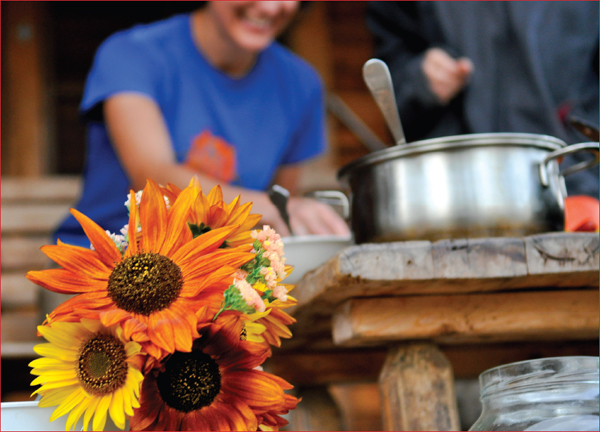
Foreword
I n January 2010, news came out that one in four American families experienced at least one day in 2009 when they were too short of money to buy the food they needed. That same week, different researchers released data revealing that a third of Americans were not just overweight but obese. Its easy to get discouraged.
But its also easy, and important, to get encouraged.
This beautiful volume takes one small city, Missoula, Montana, and shows how it is learning to feed itself. Missoula residents are growing food so that even the neediest can eat and, in the process, are teaching their kids to grow the food so theyll have a way of providing for their families in the future.
This kind of urban/suburban farming builds community at least as effectively as soil, and that community is at least as important as the produce. If youve got a troubled teenager on your hands, he or she may well need to talkbut it will be easier to talk if youre stacking pumpkins at the same time, or pulling potatoes, or weeding carrots. If you want to connect one neighbor with another, it turns out that few things work better than starting a garden in the middle of the block. Everyone can do something: compost, water, kibitz.
The stories and pictures here speak for themselves. But its important to know that the larger positive trends are not confined to Missoula.
After 150 years of decline, the number of farms in the country has started to grow rapidly in recent years. Most are small, producing local food for local people, not corn syrup for enormous processing factories. Young people are beginning to take up farming again in much greater numbers. There are still more prisoners than farmers in Americabut the gap has begun to close. Farmers markets are the fastest-growing part of the national food economy, with sales steadily increasing.
As you read this book, youll start to see that change has come not just because its needed, but because weve finally begun to understand that theres something in us that needs to nurture and provide. Sociologists not long ago found that shoppers at farmers markets had ten times more conversations per visit than shoppers at supermarketsits a different world weve begun to build. Or maybe rebuildbecause each picture in this book would be familiar to an American of a century ago, even if it seems unlikely to many of us at first glance.
Hooray for the good green thumbs of the Garden City. May their example continue to spread far and wide. Weve never needed it more badly, or wanted it as much!
Bill McKibben
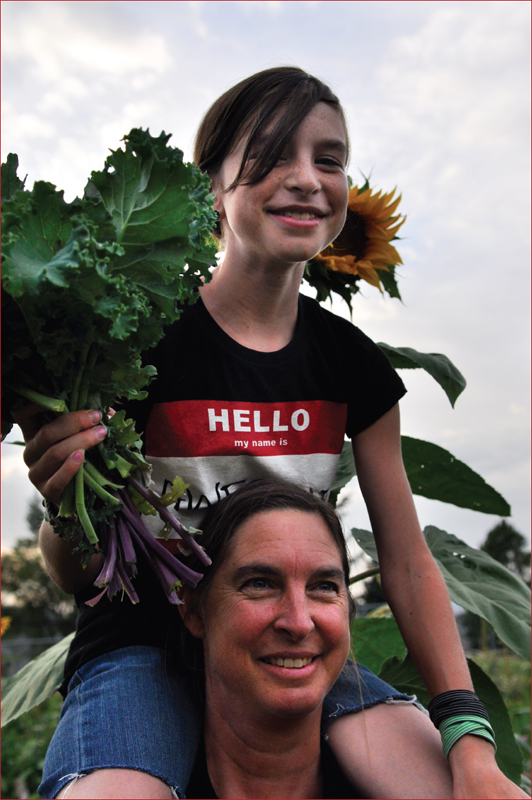
The food bank really needed fresh food, and wouldnt it be a better experience for the university students if they knew that the food they were growing and working so hard for actually went to good hands? From there, we just kept casting the net wider and wider.
Josh Slotnick
After the military I went to college and studied philosophy. My partner at the time, Laurie, and I, we dug and planted a huge garden in our backyard in Pennsylvania. We were on an island of about four houses. Beyond that were two highways and a main road and an auto dealer. When we looked out all we saw was industrial craziness: smoke stacks, pavement, and bridges. I started making connections as to where it led.
Greg Price
We moved in about four years agoJason and I and my pregnant belly. We needed a bigger place because we were having this child, but we couldnt really afford a house and a yard. So we found this house without a yard, but we had this adjacent weed-infested dirt lot just staring at us in the face. It was forgotten city land.
Gita Saedi Kiely
My dad and I proceeded to have a screaming match in the eating area. Tim saw that we were obviously not getting anywhere because I was just enraged. Then we went for a walk, Tim and I, and he asked me if I wanted to be a part of Youth Harvest program, which would basically be me working up at a farm for a summer. And thats what I wanted. I was ready for my life to change.
Hannah Ellison
Introduction
J osh Slotnick started as an aspiring teacher offered the chance to feed the hungry. Greg Price was a military veteran determined to escape the industrial craziness of civilization as he knew it. Gita Saedi Kiely was a new homeowner and future mother staring out her window at a vacant lot. Hannah Ellison was a sixteen-year-old drug addict dragged 500 miles from home by a father desperate to save her life.
The way one local food organization in an unlikely location brought them and others together, whatunitedthey have been able to accomplish, and how other people all across the United States and around the world can transform themselves and their neighborhoods through the intersection of local agriculture and community are the subjects of this book. Each individuals story, accompanied by striking color photographs, informs, instructs, and, we hope, inspires. Taken as a whole, they prove its possible to eat well locally even if you dont live on a rural homestead or in an elite urban area, and that volunteer-powered farms and gardens, even in a harsh climate, can provide satisfying food to feed a diverse population.



